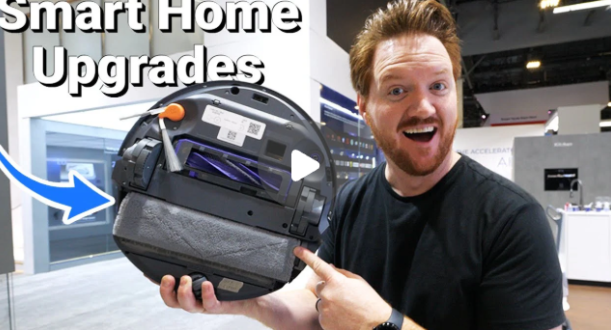Why Traditional Mops Might Not Be Enough: Exploring Alternatives for Thorough Floor Cleaning

Introduction: The Limitations of Standard Mops
For generations, the standard mop and bucket have been the go-to tools for floor cleaning. However, in industrial and commercial settings, these traditional methods often fall short of providing a truly thorough clean. This article explores the limitations of standard mops and examines alternative tools and techniques that offer more effective and hygienic floor care solutions.
Why Traditional Mops Often Fail
Inconsistent Cleaning Quality
Traditional mops can redistribute dirt and grime rather than completely removing it. This is partly due to the design of string mops, which can trap dirt within their fibers and spread it across the floor surface. The result is a less-than-ideal clean that may not meet the standards required in many professional environments.
Hygiene Concerns
Using the same bucket of water for an entire cleaning session can lead to the spread of bacteria and other contaminants. As the mop is repeatedly dipped into the bucket, the water becomes increasingly dirty, effectively turning the cleaning process into a method of spreading germs rather than eliminating them.
Inefficient Dirt Removal
Mops may not always lift dirt and debris effectively from the floor. Instead, they might push contaminants around, leaving behind a layer of grime. This is especially problematic in industrial settings where grease, oil, and other difficult-to-remove substances are common.
Limited Reach
Traditional mops struggle to reach certain areas, such as corners, edges, and underneath equipment. These inaccessible spots can accumulate dirt and become breeding grounds for bacteria, compromising the overall cleanliness of the space.
Assessing Mop Effectiveness
Visual Inspection Limitations
Relying solely on visual inspection to assess floor cleanliness can be misleading. Floors may appear clean to the naked eye, but microscopic contaminants can still be present.
ATP Testing and Hygiene Standards
To accurately assess floor cleanliness, Adenosine Triphosphate (ATP) testing can be employed. An ATP tester measures surface cleanliness by detecting organic matter left behind after cleaning. The results may show that traditional mops are insufficient to remove bacteria and contamination, up to 90% more effectively by comparison.
Exploring Alternatives for Thorough Cleaning
Microfiber Mops
Microfiber mops are popular because they are positively charged and attract negatively charged particles such as dirt and microorganisms. These mops have thin polyester and polyamide fibers that are more absorbent than cotton. Microfibers can penetrate the microscopic pores in most flooring material. Other benefits of microfiber mops include reduced chemical and water use, reduced cleaning time, and reduced occupational exposure and injuries.
Mop Head Material and Construction
Cotton string mops are used on all types of floors, including concrete and smooth tile. Microfiber flat mops can be used on most smooth floors but may not perform well on very rough surfaces. Microfiber string mops provide better cleaning consistency and require less liquid than cotton mops. Microfiber mops also last longer and are machine washable.
Disposable vs. Launderable Options
Launderable microfiber pads can be as effective as disposable options, but their effectiveness depends on proper and consistent cleaning. Disposable pads can be easier to prevent cross-contamination, but ultimately come with a higher cost.
Professional Cleaning Services
Professional cleaning services will typically use more advanced equipment than a standard mop. These may include scrubbers, buffers, and extractors.
Advanced Mopping Systems
Modern mopping systems are evolving due to concerns raised during the Covid-19 pandemic. Disposable systems are becoming increasingly sought after to prevent the transmission of viruses from one surface to another. As such, it is expected that there will be a growing demand for fast and efficient mopping methods and better-trained cleaners who can use these methods.
These systems are ideal in areas full of obstacles such as furniture, chairs, and cabling. They also clean up messes faster, and provide high performance in any case.
Practical Considerations for Better Floor Care
Regular Mop Head Replacement
Replace cut-end mops every 7-9 days, and for looped mops, change them regularly or if they are launderable, use them more extensively, especially if launderable.
Effective Disinfectant Application
Solutions with onboard dispensing are lighter weight. This is especially necessary for deep cleaning results when minimizing residual soils.
Addressing Surface Compatibility
Industrial facilities will frequently have different floors that require a specific approach. Mops might not be suitable for all surfaces, especially scratchable surfaces.
How Mops Can Contribute to Better Cleaning
Mopping is a key step in creating a truly effective cleaning routine. When paired with a 5ghz robot vacuum, it ensures both deep and consistent results, making it easier to keep your floors immaculate.
Conclusion: Rethinking Floor Cleaning Strategies
While the traditional mop and bucket have long been staples in floor cleaning, their limitations are becoming increasingly apparent in modern commercial and industrial environments. By understanding these shortcomings and exploring alternative tools and techniques, facilities can achieve more thorough, hygienic, and efficient floor care, ultimately contributing to a safer and healthier environment.


